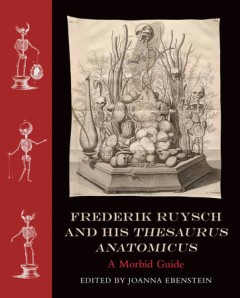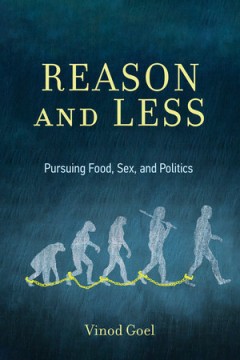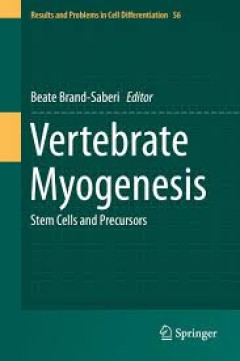Filter by

Advances in Knee Surgery
In the orthopedic surgical field, knee surgeries, including articular cartilage repair procedures, meniscus surgery, ligament reconstruction surgery, osteotomy surgery, and partial/total knee arthroplasty surgery, have made great advances over the last few decades. This Special Issue highlights and focuses on the surgical concepts and techniques, decision-making processes, perioperative managem…
- Edition
- -
- ISBN/ISSN
- 9783036596099
- Collation
- oer.unej.ac.id
- Series Title
- -
- Call Number
- -

Proceedings of the 8th International Conference on Attosecond Science and Tec…
Volume akses terbuka ini menyatukan makalah-makalah terpilih dari Konferensi Internasional ke-8 tentang Sains dan Teknologi Attosecond. Kontribusi di dalamnya mewakili kemajuan terbaru dalam ilmu pengetahuan attosecond, yang mencakup kemajuan terbaru dalam dinamika elektron sangat cepat dalam atom, molekul, kelompok, permukaan, padatan, struktur nano, dan plasma, serta generasi pulsa XUV sub-fe…
- Edition
- -
- ISBN/ISSN
- 978-3-031-47938-0
- Collation
- online resource ( XIX, 220 Pages)
- Series Title
- Prosiding Springer dalam Fisika (SPPHY)
- Call Number
- 539.14 ARG p

Atomic Physics for Everyone = An Introduction to Atomic Physics, Quantum Mech…
This open access textbook introduces beginning undergraduate students and high school students to the world of quantum mechanics and atomic spectroscopy. Requiring no previous knowledge of physics and no math beyond basic algebra and sines and cosines, this book focuses on concepts to make the excitement of atomic physics more accessible for learners than ever before. It comes replete with lea…
- Edition
- 1
- ISBN/ISSN
- 9783031695070
- Collation
- XIII, 263 hlm; ill., lamp.,
- Series Title
- -
- Call Number
- -

Handbook of Pathogens and Diseases in Cephalopods
The aim of this open access book is to facilitate the identification and description of the different organs as well as pathogens and diseases affecting the most representative species of cephalopods focussed on Sepia officinalis, Loligo vulgaris and Octopus vulgaris. These species are valuable ‘morphotype’ models and belong to the taxonomic groups Sepioidea, Myopsida and Octopoda, which in…
- Edition
- 1
- ISBN/ISSN
- 9783030113308
- Collation
- XV, 230 ill; lamp
- Series Title
- -
- Call Number
- -

Sowing Legume Seeds, Reaping Cash : A Renaissance within Communities in Sub-S…
This open access book shares impact stories – testimonies from various value chain actors who have been part of the Tropical Legumes (TL) projects, over the past twelve years. The Tropical Legumes projects led by ICRISAT in three parts (TLI, TLII and TLIII), constitute a major international initiative supported by the Bill & Melinda Gates Foundation (BMGF) and jointly implemented by the Inter…
- Edition
- 1
- ISBN/ISSN
- 9789811508455
- Collation
- XVI, 106 hlm; ill., lamp.,
- Series Title
- -
- Call Number
- -

Proceedings of the 8th International Conference on Attosecond Science and Tec…
This open access volume brings together selected papers from the 8th International Conference on Attosecond Science and Technology. The contributions within represent the latest advances in attosecond science, covering recent progress in ultrafast electron dynamics in atoms, molecules, clusters, surfaces, solids, nanostructures and plasmas, as well as the generation of sub-femtosecond XUV and X…
- Edition
- 1
- ISBN/ISSN
- 9783031479380
- Collation
- XIX, 220
- Series Title
- -
- Call Number
- -

Frederik Ruysch and his thesaurus anatomicus :a morbid guide
A lavishly illustrated guide to the magnum opus of the great seventeenth-century anatomist, master embalmer, artist, and collector of specimens. Frederik Ruysch (1638-1731) was a celebrated Dutch anatomist, master embalmer, and museologist. He is best remembered today for strange tableaux, crafted from fetal skeletons and other human remains, that flicker provocatively at the edges of science, …
- Edition
- -
- ISBN/ISSN
- 9780262366526
- Collation
- 1 online resource (256 pages)
- Series Title
- -
- Call Number
- -

Reason and Less: Pursuing Food, Sex, and Politics
A new, biologically driven model of human behavior in which reason is tethered to the evolutionarily older autonomic, instinctive, and associative systems. In Reason and Less, Vinod Goel explains the workings of the tethered mind. Reason does not float on top of our biology but is tethered to evolutionarily older autonomic, instinctive, and associative systems. After describing the conceptua…
- Edition
- -
- ISBN/ISSN
- 9780262369701
- Collation
- -
- Series Title
- -
- Call Number
- -

The body fantastic
"An original view of human corporeality linking myths, legends, and fables with biomedical concepts about some bodily parts"--OCLC-licensed vendor bibliographic record.
- Edition
- -
- ISBN/ISSN
- 0262365693
- Collation
- 1 online resource.
- Series Title
- -
- Call Number
- -

Vertebrate Myogenesis Stem Cells and Precursors
This book addresses the differentiation control of skeletal muscle in different locations of the vertebrate body Particular attention is paid to novel regulatory molecules and signals as well as the heterogeneity of origin that have revealed a developmental overlap between skeletal and cardiac muscle. Different functional muscle groups are the product of the evolution of the vertebrate classes,…
- Edition
- -
- ISBN/ISSN
- 978-3-662-44608-9
- Collation
- -
- Series Title
- -
- Call Number
- -
 Computer Science, Information & General Works
Computer Science, Information & General Works  Philosophy & Psychology
Philosophy & Psychology  Religion
Religion  Social Sciences
Social Sciences  Language
Language  Pure Science
Pure Science  Applied Sciences
Applied Sciences  Art & Recreation
Art & Recreation  Literature
Literature  History & Geography
History & Geography